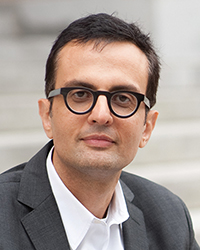Retrofitting existing buildings is new frontier of energy efficiency - by Ali Malkawi

for Green Buildings and Cities
The current political climate in the U.S. puts the country’s federal commitment to clean energy and reducing carbon emissions into question. At the same time, leaders on the state and city level have reaffirmed their commitment to energy efficiency and lowering carbon emissions. Local lawmakers, civic leaders and citizens recognize the importance of curbing climate change and the very real impact that local legislation and green initiatives can have.
Enter the retrofit. Existing U.S. building stock accounts for around 40% of energy consumption, with housing nearly a quarter of that use. The burden of this energy consumption is on property owners, who spend more than $230 billion annually to heat, cool and power more than 113.6 million homes. Considering this, it’s clear that the retrofit market presents a huge opportunity to solve one of the world’s biggest energy problems - inefficient buildings.
Having recognized this opportunity and looking to achieve new levels of rigorous energy efficiency, the Harvard Center for Green Building and Cities at the Harvard University Graduate School of Design has undertaken an extreme retrofit: HouseZero, a first-of-its-kind project that will use no HVAC system, no electric light during the day, have 100% ventilation, use almost zero energy, and produce zero carbon emissions, including embodied energy of materials.
HouseZero embodies the local and institutional efforts to reduce energy consumption and push the boundaries of efficiency. Currently under construction at 20 Sumner Rd. in Cambridge, HouseZero will demonstrate how to transform one of the most challenging building types - an existing home - into a prototype that will model ultra-efficiency for other property owners. The structure relies on existing technologies in the retrofit to demonstrate what is possible and how this level of efficiency could be replicated. As a living test-case, it will use sensors on all components of the building to adjust itself and also fuel research based on actual data on the building’s energy exchange system. This data will be made public, both furthering efforts within the international green building and design community and also giving property owners better insight into how to transform their own properties with the existing technologies at their fingertips.
Taking a local approach to curbing energy demand, one that also aims to solve the problem of inefficient existing buildings, is completely changing the paradigm for ultra-efficiency from one focused on energy production to curbing energy demand. This approach - fueled by better design and current technology - will change the way we think about the possibilities of energy efficiency.
Ali Malkawi, professor of architectural technology at the Graduate School of Design and founding director of the Harvard Center for Green Buildings and Cities, Cambridge, Mass.
Newmark negotiates sale of 10 Liberty Sq. and 12 Post Office Sq.


Make PR pop by highlighting unique angles - by Stanley Hurwitz

Four tips for a smooth 1031 Exchange - by Bill Lopriore

Five ways to ruin a Section 1031 Like-Kind Exchange - by Bill Lopriore








.png)